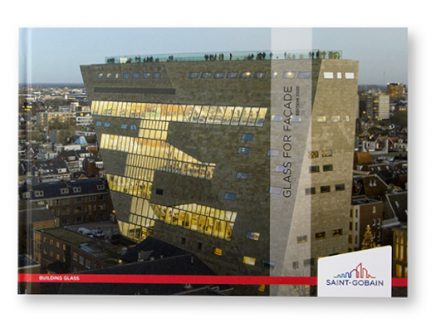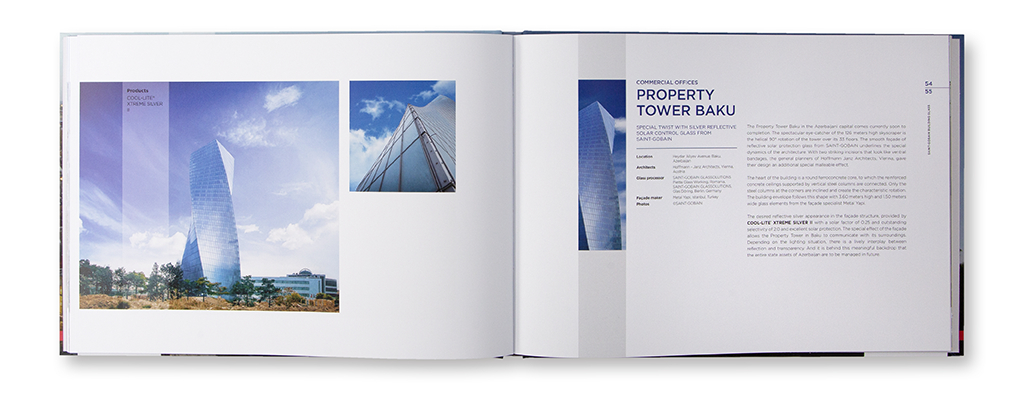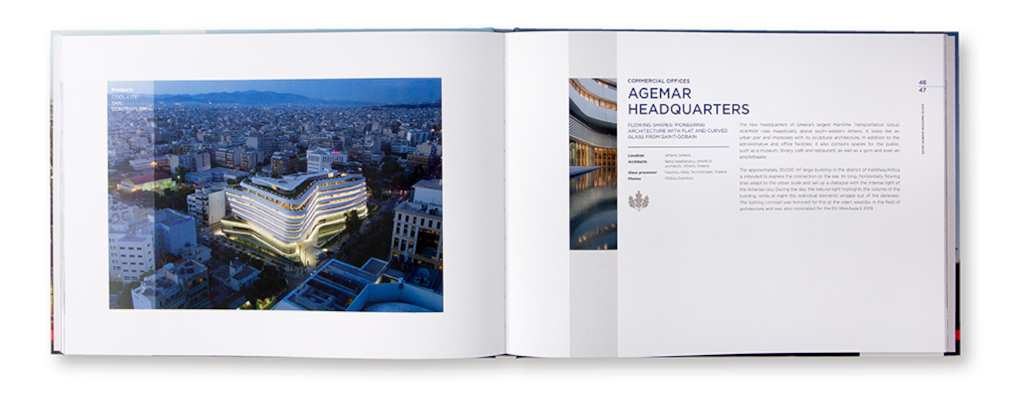Livres corporate

Titre : "Glass for Façade - Edition 2020"
Auteur : Saint-Gobain / Business Unit Glass Facades Key Accounts
Achevé d'imprimer sur les presses d'Escourbiac (81, Graulhet) en janvier 2021
Nombre de pages : 100
Façonnage : format 29,7 x 21 cm à l'italienne, habillage de couverture papier rembordé sur carton 24/10, intérieur 6 cahiers de 16 pages + 4 pages, gardes rapportées 2 x 4 pages, reliure cartonnée, cahiers cousus, dos droit repincé
Impression :
- Couverture : quadri recto, pelliculage grain pierre recto
- Gardes rapportées : quadri recto/verso
- Intérieur : quadri recto/verso
Types de papiers utilisés :
- Couverture : imprimée sur couché Heaven 42 150 g
- Gardes rapportées : imprimées sur offset blanc 170 g
- Intérieur 84 pages : imprimé sur Heaven 42 Soft/Matt 170 g
- Intérieur : imprimé sur Pop'Set Perle 120 g
Glass for Façade – Edition 2020
Glass for Façade Édition 2020 du livre de référence des vitrages pour façade proposés par l’unité « Building Glass » de Saint-Gobain. Une sélection de 21 projets architecturaux exceptionnels est présentée cette année, comme le « Regionens Hus » à Gothenburg (Suède), l »‘Academy Museum of Motion Picture » à Los Angeles, ou le « Property Tower » de Baku en Azerbaidjan. Un cahier technique de 16 pages est placé à la fin du livre, imprimé sur papier Pop’Set Perle. Le reste du livre est imprimé sur papier à la blancheur absolue Heaven 42 de Sappi, en quadrichromie, en offset HR-UV trame fine. L’ouvrage est une reliure cartonnée, cahiers cousus et dos droit repincé, avec un pelliculage grain pierre au recto de la couverture.
Today, is no longer possible to talk about architecture without considering the long-term importance of built living spaces for building users and the environment. It is in this perspective that SAINT-GOBAIN encourages innovation in glass – always true to our motto «Making the word a better home».
With the Reference Book 2000 we would like to take you on a journey to extraordinary architectural projects in different countries and continents. The project not only show a wide range of glass solutions and innovations for the building envelope. They also show what we understand by sustainable design of living spaces distinctive buildings that make our environment worth living in.
Glass plays a central role in all of them, as the material is highly multifunctional. Glass and glazing today meet very complex and often contradictory requirements that are of great importance in times of climate charge. They have to provide daylight and at the same time ensure thermal insulation and solar control – while offering architects a large range of aesthetic options for designing future oriented living spaces.


